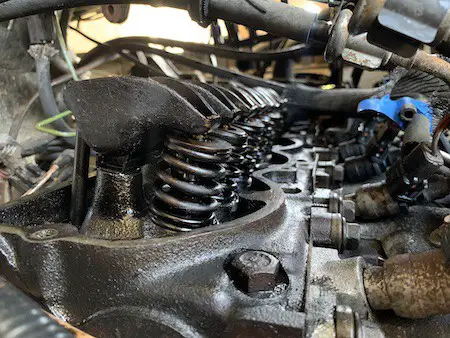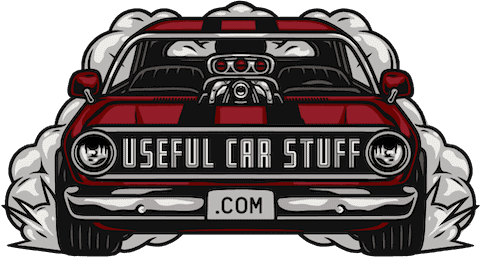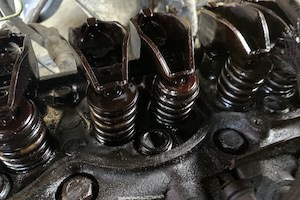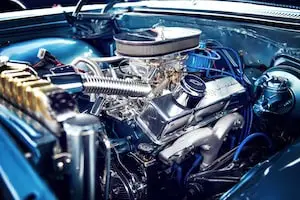For a head gasket replacement or an engine rebuild, many wonder as they get to the assembly stage what to do with the old cylinder head bolts. They are critical engine components torqued tightly and are under a lot of pressure. Can I reuse my cylinder head bolts?
Head Bolts can be reused unless specified in the car manual but should be inspected carefully and replaced at any signs of corrosion or wear. Because of the insignificant cost it is common practice to replace them. There are also certain types of head bolts that should not be reused called TTY (torque to yield) bolts that the manufacturer will specify that they need to be replaced.

Cylinder head bolts are designed to withstand the pressures of the engine combustion chamber. Because they are under so much pressure and can cause a lot of money and trouble if they break, it is common practice and is recommended to replace them if they have been used.
Many people have reused head bolts though and had no problems, but often stretch bolts are used and those should always be replaced once they have been stretched out and removed. Most bolts stretch to some degree and should be replaced before failure.
Cylinder Head Bolts: To Reuse or not to Reuse
Head bolts are often torque-to-yield bolts. They are designed to elongate upon torquing to yield a greater clamping force. Hence the name “torque to yield” bolts. They are also often called stretch bolts.
If stretch bolts are not used, then conventional bolts or head studs are used.
Torque to Yield (TTY) Stretch Bolts
TTY bolts are commonly used for head bolts and this is the type of bolt that you should be concerned about reusing.
What are Torque to Yield Bolts?
These are TTY bolts (torque-to-yield) also called stretch bolts. Stretch bolts are often used as head bolts and have a special design to actually stretch out as they are installed to torque specifications.
They often have a length of the shaft of the bolt before the threads that is made to stretch once torqued to the proper specification. Torque specs will often include directions to torque the bolt to a certain force and then to turn the bolt another number of degrees. That is when the bolt stretches.
The stretched bolt provides a stronger clamping force and keeps the bolt from loosening in critical locations such as suspension or engine heads.
How do you tell TTY bolts from regular bolts?
TTY bolts also known as stretch bolts are identified by a section of the bolt shaft just above the threads dedicated to elongate. Stretched bolts are easily identified by the portion of the shaft that is a smaller diameter than the rest. Some TTY bolts are nearly impossible to distinguish and the best way to tell is to check if the manufacturer gives a torque plus an angle spec to further tighten the bolt. Any bolts with a spec to tighten to torque plus an angle is a TTY bolt.
There is a stretch zone along the shaft of the bolt. If it is deformed or if the diameter of the shaft has a step or has been reduced then it has been stretched.
Check with the manufacturer of the car or look in the repair manual for specs.
When the specifications provided for the bolt say something like, “torque to x pounds and then a quarter turn” you can bet it is a stretch bolt.
Can I Reuse Stretch Bolts?
Stretch bolts also known as TTY bolts should be replaced each installation. TTY bolts have a maximum stretch capacity and they can be reused only when they have not met this limit. Because they are readily available, and are often placed under a great amount of strain, it is recommended to replace them to avoid chance of failure.
Just go buy some new ones! It is not worth skipping on the 4 dollars for each new bolt to have a head gasket leak and have to rebuild the top of the engine all over again!
Technically you may reuse the bolts after checking the bolt manufacturer specifications and measuring the bolt ensuring that if falls within the stretch limit. According to the manufacturers of the stretch bolts, there is a specification of a maximum length that the bolt can be stretched to before it becomes to week to rely on. So, it IS possible to reuse TTY bolts and some do without trouble but often easier to replace.
Head bolts can be reused when the type of head bolt is not a TTY bolt and when the manufacturer specifies that they can be reused. They may also be reused when the head bolts are actually head studs which are bolts threaded on both ends.
Head Studs Instead of Bolts
Head Studs are used often in performance application and are not used in most cars. Some use head studs rather than bolts for slightly more precision with the torque specs. Some think that the strength of the fastener makes a lot of difference when in reality the strength of the gasket is most important.
A note that should be made is it is not recommended to switch between bolts and studs without honing the block at the same time. Without honing the block it can distort the bore.
Can I tighten head bolts to stop a leaking head gasket?
Speaking of reusing head bolts, what if I have a head gasket leak and am considering attempting to tighten them to see if it will stop the leak before I replace the head gasket entirely?
Following the appropriate tightening sequence, and it is acceptable to try to stop a leaking head gasket by tightening the head bolts. Any of the bolts having worked loose may be the cause of a head gasket leak.
Tightening the head bolts can fix your leak as it has worked in some instances, it just depends if the head gasket is torn or not. If it is torn, then tightening the bolts will not fix the leak until the gasket is replaced.
Generally, it is going to be a blown gasket that is allowing the coolant to leak through, but before you do the job, it is worth a shot!


